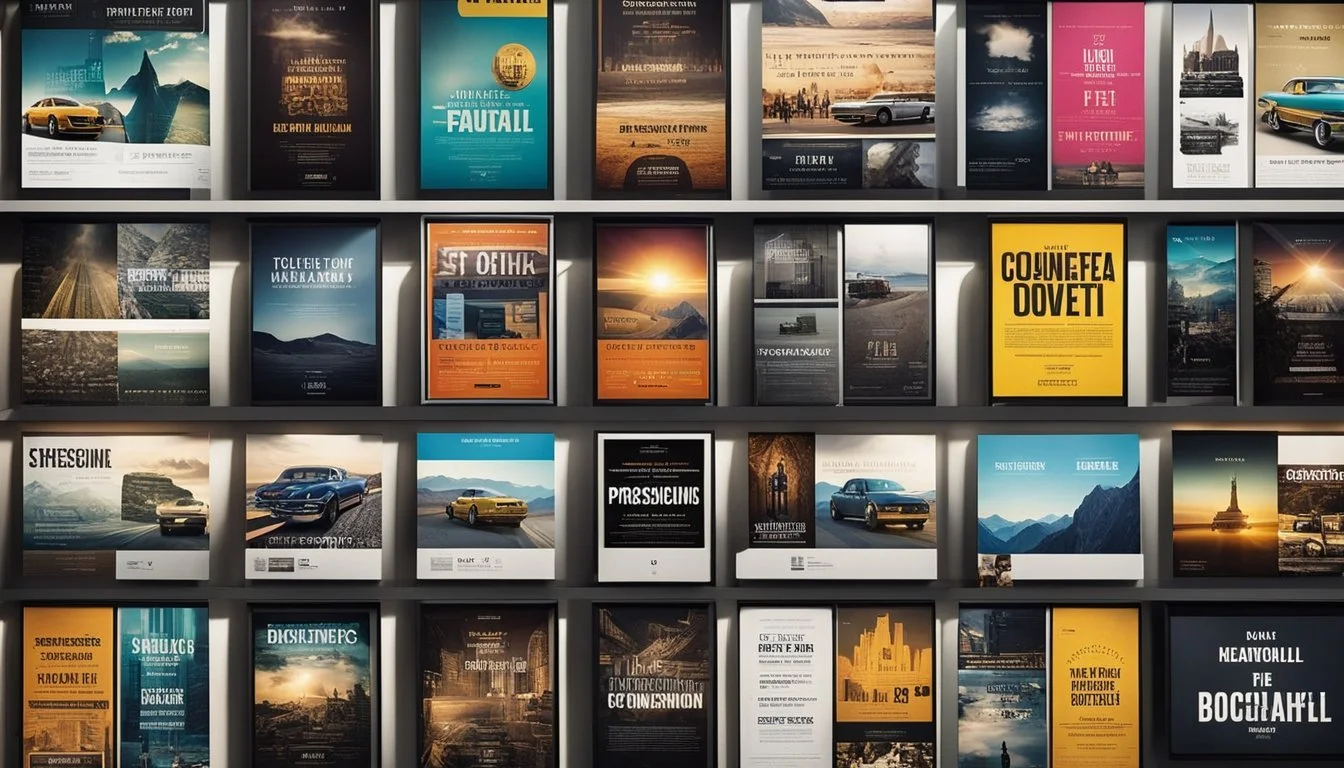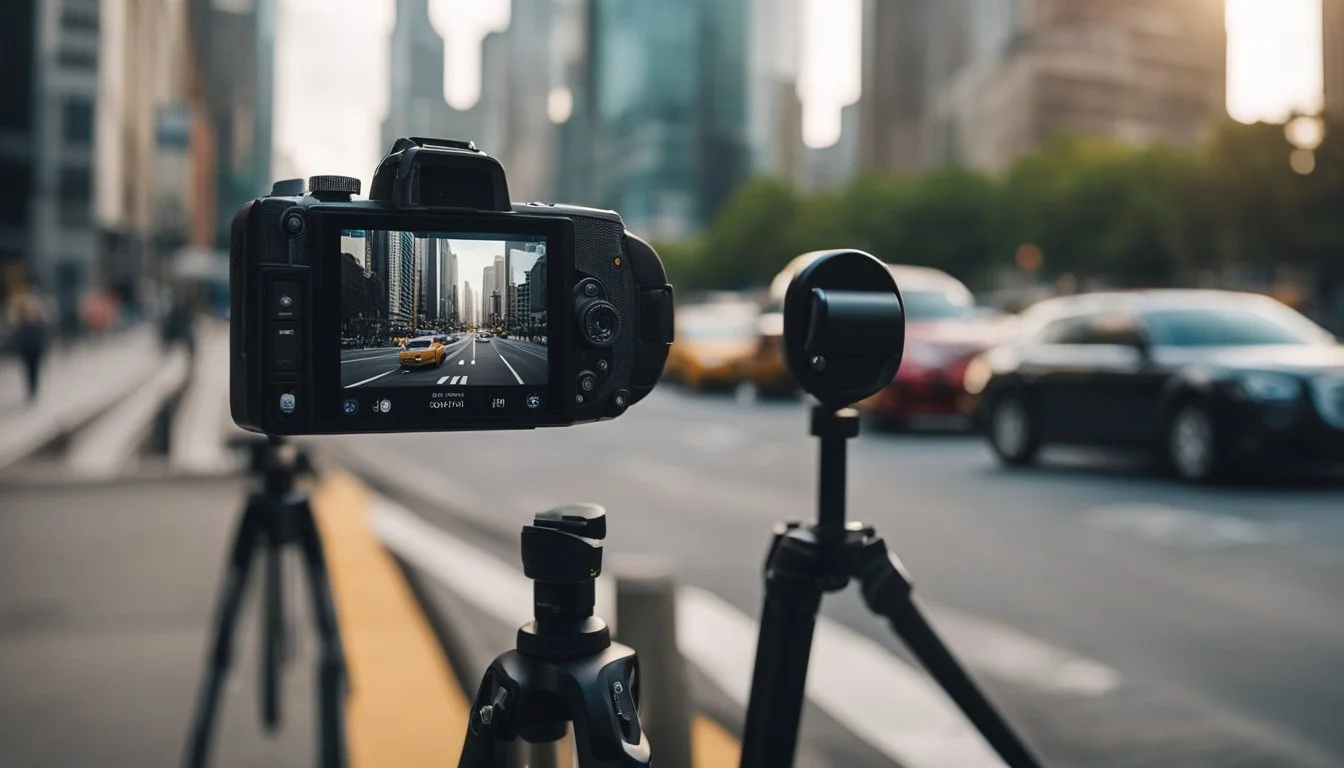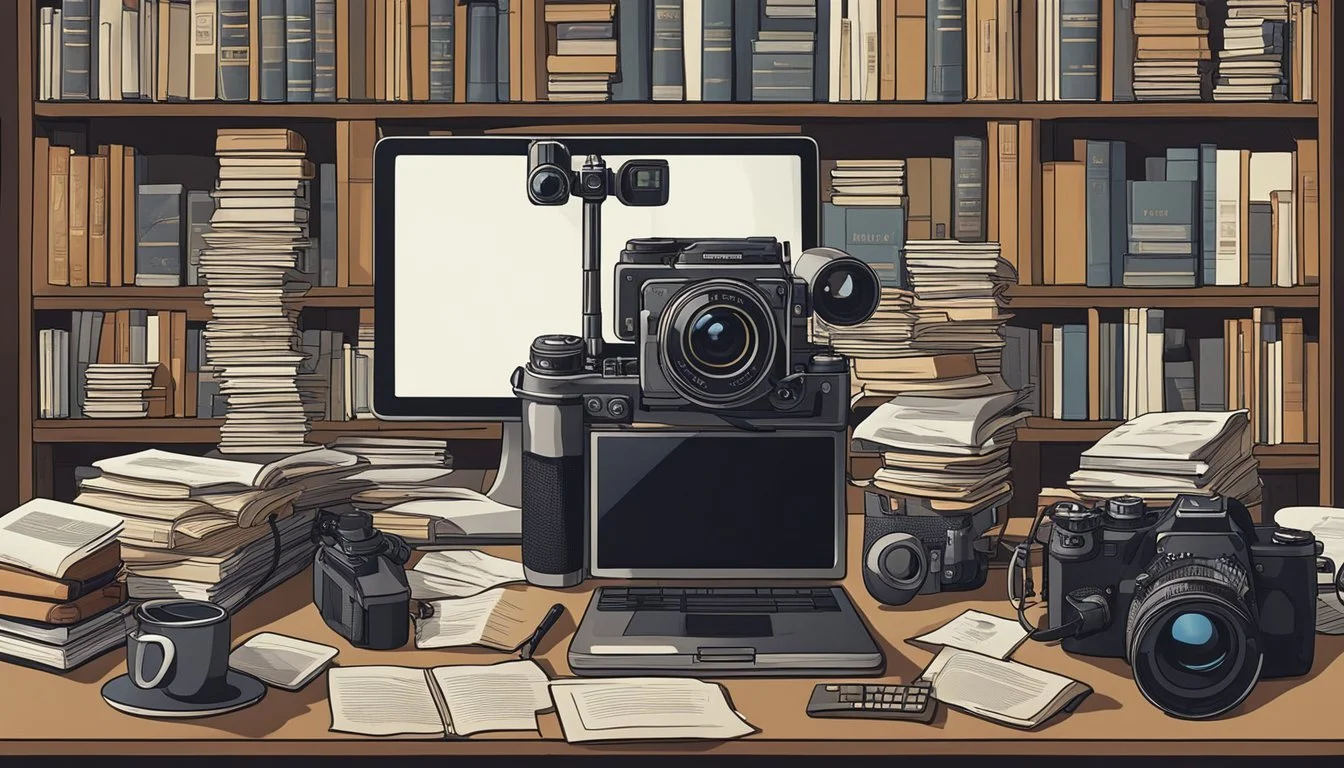The Art of the Documentary Series
Captivating Viewers Episode After Episode
In an era where viewers are inundated with countless entertainment options, captivating and sustaining interest over multiple episodes in a documentary series can be a formidable task. Engaging viewers consistently requires a mix of competent storytelling, a compelling subject, and strategic pacing across episodes. Successful series like "The Private Life of a Masterpiece" demonstrate the power of unveiling intricate, behind-the-scenes details of artistic works, enticing viewers to return for more revelations each episode.
Maintaining cultural relevance and viewer engagement over time hinges on delivering content that resonates deeply and remains fresh with each episode. Shows that focus on dynamic subjects, like the life and work of influential artists such as Louise Bourgeois in "Louise Bourgeois: The Spider, the Mistress and the Tangerine," manage to capture and hold audience interest through intimate, evolving portrayals. This approach ensures that each episode offers a unique perspective that builds upon the previous ones, keeping the narrative energized.
Moreover, the strategic release and promotion play crucial roles in sustaining interest. Using smart marketing tactics and aligning release schedules with viewer habits can drive sustained engagement. By combining compelling content with effective audience strategies, documentary series can achieve longevity and maintain viewer interest over numerous episodes.
Defining the Documentary Series
A documentary series extends the traditional documentary format across multiple episodes. These series focus on real people, places, and events over time, allowing for deeper exploration of their subjects.
Key Characteristics:
Multi-Episode Format: Unlike single documentaries, these series are split into multiple episodes, offering a progressive narrative.
In-Depth Exploration: The episodic structure allows filmmakers to delve deeper into topics, examining different facets thoroughly.
Documentary series often structure content to build suspense and engagement. Each episode may focus on a specific aspect or angle of the larger story.
Subjects and Themes:
Historical Events: Often used to detail intricate historical events with extensive background.
Social Issues: Documentarians may address ongoing social issues, providing a platform for various voices.
Techniques:
Interviews: Commonly used to gather personal insights and expert opinions.
Archival Footage: Integral for providing historical context and authenticity.
Engagement:
The serial nature helps maintain viewer interest by developing characters and storylines over several installments. This approach encourages a deeper connection with the subject matter.
Example:
Making a Murderer: This series examines the criminal case of Steven Avery, revealing new developments in each episode.
Historical Evolution of the Documentary Series
The documentary series has a rich history dating back to the early 20th century. Nanook of the North (1922), often considered the first feature-length documentary, portrayed the life of an Inuit family. This pioneering work set the stage for serial storytelling in the documentary format.
In the 1950s, television further revolutionized the genre. CBS's See It Now (1951-1958), created by Edward R. Murrow, showcased episodes on social and political issues. This series format allowed for a deeper exploration of topics over multiple episodes.
During the late 20th century, documentary series expanded to cover a wide range of subjects. The 1980 BBC series Life on Earth, narrated by David Attenborough, became a landmark in nature documentaries. It demonstrated the potential of multi-episode documentaries to captivate audiences with natural history stories.
The 21st century saw significant innovations in the format. Series like Planet Earth (2006) utilized high-definition technology to offer viewers stunning visuals over several episodes. This era also saw the rise of streaming platforms, which provided new opportunities for documentary series to reach global audiences.
Streaming services such as Netflix and Amazon Prime introduced a broader variety of topics and styles. High-profile series like Making a Murderer (2015) not only garnered massive viewership but also influenced public opinion and even legal proceedings.
Throughout its evolution, the documentary series has continually adapted to technological advancements and audience preferences. From the early days of silent films to today's high-definition streaming content, this genre remains a powerful medium for storytelling.
Crafting the Narrative Arc
In creating a documentary series, structuring a compelling narrative arc and developing characters across episodes are essential to sustain audience interest.
Story Structure in Documentaries
A documentary series should follow a well-defined story structure. This ensures the audience remains engaged from the beginning to the end of the series. Each episode must have a clear beginning, middle, and end.
Ken Burns emphasizes the importance of applying traditional storytelling laws to documentaries. This means introducing a bold beginning, an engaging middle, and a compelling conclusion.
Using a consistent narrative structure across episodes helps maintain coherence. It guides viewers through the plot while balancing factual information with storytelling elements. Keeping episodes interconnected yet self-contained further enhances viewer retention.
Character Development Across Episodes
Character development is crucial in a documentary series. Well-developed characters create an emotional connection with the audience. Viewers are drawn to characters they can relate to, making them more invested in the series.
Introduce characters early and develop their stories gradually. This allows viewers to build a relationship with them over time. Showcase character growth and evolution through interviews, archival footage, and personal narratives.
Highlighting challenges and personal triumphs helps humanize characters, providing a deeper insight into their lives. This fosters a sense of empathy and intrigue, essential for sustaining interest throughout the series.
Visual Storytelling Techniques
Visual storytelling in a documentary series hinges on the strong use of cinematography and precise editing. These elements ensure that the narrative remains engaging while maintaining the integrity and flow of the story across multiple episodes.
Cinematography in Series
Cinematography plays a pivotal role in crafting a visually compelling documentary series. The choice of camera angles and movements can significantly enhance storytelling. Close-ups capture intimate details, while wide shots provide context and immersion.
Lighting is another crucial aspect. Proper lighting can convey mood and emphasize particular moments. Natural light is preferred for authenticity, but controlled lighting can be used to highlight significant scenes. Additionally, the use of lenses and depth of field helps create visual interest and guides the viewer’s focus.
The use of drone footage can offer unique aerial perspectives, adding a dynamic element to the series. Stabilized camera equipment, like gimbals, ensures smooth shots, even in active or unstable environments, enhancing the viewer’s experience.
Editing for Continuity and Pace
Effective editing ensures that the narrative flows seamlessly, maintaining the viewer's interest. Continuity editing is essential to preserve the logical progression of the story. Editors need to be meticulous in matching scenes and maintaining consistent visual and audio elements across episodes.
Pacing is another critical element. The editor must balance moments of tension with periods of reflection. Fast cuts can build excitement, while slower transitions allow the audience to absorb information.
Incorporating sound design and music effectively can elevate the storytelling. Ambient sounds and score selections should complement the visuals and enhance emotional responses. Editors often use montages to condense time and convey development across episodes efficiently.
By focusing on these techniques, a documentary series can maintain a high level of engagement and deliver a powerful, cohesive story that resonates with its audience.
Conducting Engaging Interviews
Conducting engaging interviews is essential for creating captivating documentary series. The key elements include asking effective questions and establishing a strong rapport with subjects to elicit authentic responses.
Questioning Techniques
Effective questioning techniques can make or break an interview. Open-ended questions are critical as they encourage detailed and thoughtful responses. Instead of yes/no questions, ask "Can you describe..." or "What was your experience with...". This invites subjects to share stories and insights.
Follow-up questions should delve deeper into specific points raised during initial answers. This shows genuine interest and encourages more extensive dialogue. Silence can also be a powerful tool; giving subjects a moment to think often leads to more reflective and revealing responses.
Using visual aids or cues can help illustrate points and prompt further discussion. For example, showing a photograph or a piece of memorabilia might jog a subject's memory and lead to richer storytelling.
Building Rapport with Subjects
Building rapport with interview subjects is crucial for authentic and engaging content. Start by researching the subject's background to find common ground and build trust. Sharing a few details about the filming process and what to expect can also help put subjects at ease.
Establishing a comfortable environment is important. Choose a setting that is familiar to the interviewee if possible, which can make them feel more relaxed and open. Body language and eye contact are also significant; maintain an attentive posture and nod occasionally to show understanding and empathy.
Active listening is essential. Reflecting back what the subject says and asking clarifying questions shows that the interviewer is engaged and values their input. This builds confidence and encourages the subject to open up more during the interview.
Maintaining Authenticity and Ethical Standards
Ensuring both authenticity and ethical rigor in documentary series demands a delicate balance. It involves faithfully presenting reality while honoring the dignity and privacy of subjects.
Balancing Subjectivity and Objectivity
Documentary filmmakers must navigate the fine line between subjective interpretation and objective truth. While directors often bring a personal vision to their work, it is essential to represent events and individuals as accurately as possible.
An objective approach involves thorough research and fact-checking, ensuring that the narrative aligns with real-world events and perspectives.
Subjective elements, such as the filmmaker's perspective, can add depth but should not distort the truth. Interviews, archival footage, and first-person accounts should be used to create an honest portrayal. Balance can be achieved by presenting multiple viewpoints and letting the audience draw their own conclusions.
Transparency about the filmmaker's intentions and methods further supports credibility. Clear distinctions between opinion, interpretation, and fact can prevent misleading the audience.
Handling Sensitive Content
Sensitive content requires careful consideration to avoid harm and respect the dignity of all involved. Content warnings and audience advisories should be used when appropriate to prepare viewers for potentially distressing material.
Consent is crucial; subjects must be fully informed about how their stories will be used. This involves explaining the context, potential reach, and long-term implications of their participation.
Footage depicting traumatic events should be handled with sensitivity. Graphic or violent content, if included, needs a justified purpose. Avoid sensationalism by focusing on the story rather than the shock value.
Ethical storytelling involves protecting vulnerable populations, avoiding exploitation, and ensuring that contributors' voices are heard and respected. Documentaries have a duty to inform without harming the dignity of those who live the stories presented.
The Role of Music and Sound Design
In a documentary series, music and sound design are pivotal elements that help to maintain audience engagement and ensure a seamless viewing experience. These components support the storytelling by creating emotional connections and providing consistency across multiple episodes.
Creating Emotional Resonance
Music and sound design amplify the emotional impact of each scene. Background music underscores key moments, enhancing the emotional weight of interviews and dramatic sequences. Sound effects such as natural atmospheres and subtle audio cues deepen the viewer's immersion.
Effective sound design involves the careful selection of instruments, tempo, and tone to match the narrative's mood. For example, using a melancholic piano piece during a reflective moment can evoke sadness or contemplation. Conversely, upbeat and rhythmic compositions can underscore themes of hope or excitement.
Sound designers collaborate closely with directors to ensure that the audio aligns with the visual storytelling. This collaboration allows for the creation of a cohesive atmosphere that resonates with viewers on a deeper emotional level.
Sound Continuity Across Episodes
Maintaining sound continuity is crucial for a documentary series. Consistent use of music themes and sound motifs helps to thread episodes together, making the series feel unified. This is especially important when dealing with diverse content across episodes.
Recurring musical themes serve as auditory bookmarks, guiding viewers through the narrative. For instance, a particular theme introduced in the first episode may resurface in later episodes to reinforce key ideas or emotions.
Additionally, the use of consistent ambient noises or sound textures ensures a seamless auditory experience. Whether it’s the recurring sounds of nature in an environmental series or the persistent hum of city life in an urban documentary, consistent audio helps to maintain a cohesive tonal quality across episodes.
Employing these techniques ensures that viewers remain engaged and grounded, regardless of episodic shifts in focus or location.
Audience Engagement Strategies
Effective audience engagement strategies are essential for sustaining interest in a documentary series. Key strategies involve marketing the series well, and building a vibrant online community.
Marketing a Documentary Series
A robust marketing plan is crucial. Utilize social media platforms to create anticipation before the series launch. Release trailers, behind-the-scenes clips, and interviews with the filmmakers.
Collaborate with influencers and subject matter experts who can endorse the series and expand its reach. Email campaigns are effective for informing a loyal subscriber base about new episodes and providing exclusive content or updates.
Allocating funds to targeted ads on platforms like Facebook and Instagram can significantly increase visibility. Traditional media, such as press releases and television interviews, also play a role in reaching broader audiences.
Building an Online Community
An engaged online community keeps viewers invested between episodes. Launch official forums or social media groups where fans can discuss episodes, share theories, and engage directly with creators.
Host live Q&A sessions with directors or cast members after each episode to deepen viewer connection. Creating exclusive content, such as bonus footage or interviews, shared only with community members, adds value and encourages participation.
Organize and promote virtual watch parties to foster a shared viewing experience. Highlight fan contributions, such as artwork or essays, on the series' official channels to build a sense of inclusion and belonging.
The Impact of Streaming Platforms
Streaming platforms have revolutionized how audiences consume documentary series by fostering binge-watching habits and leveraging algorithmic recommendations to tailor viewing experiences.
Binge-Watching Culture
Streaming services, such as Netflix and Amazon Prime, have transformed viewership habits by releasing entire seasons of documentary series at once. This practice encourages "binge-watching," where viewers consume multiple episodes in a single sitting.
Binge-watching can create a more immersive experience. Audiences stay deeply engaged with the content, which can enhance understanding and emotional connection.
However, the constant availability of episodes can also lead to viewer fatigue. To mitigate this, some platforms experiment with varied release schedules to maintain interest over longer periods.
Algorithmic Recommendations
These platforms utilize sophisticated algorithms to recommend content based on individual viewing history and preferences. This personalized approach can enhance user satisfaction by presenting relevant documentary series, increasing the likelihood of continued engagement.
The algorithms draw from data such as watch time, genre preferences, and even specific viewing patterns. This precision ensures that viewers are more likely to discover documentaries that match their interests.
On the downside, the focus on personalization can create "echo chambers," where users are only exposed to familiar topics. Diversified recommendation strategies are necessary to ensure viewers encounter a broad spectrum of content.
Challenges and Solutions in Multi-Episode Documentaries
Creating a multi-episode documentary series involves several challenges:
Maintaining viewer interest: Keeping the audience engaged over multiple episodes is difficult. Repetitive content or slow pacing can cause viewers to lose interest quickly.
Consistent quality: Ensuring a high production quality across all episodes requires careful planning and resource allocation. Any dip in quality can negatively impact viewer perception.
Story cohesion: Balancing multiple storylines and characters without losing the series’ central narrative is tricky. Unclear or fragmented stories can confuse the audience.
Logistics and scheduling: Filming across various locations and coordinating with multiple subjects can be logistically challenging. Delays and scheduling conflicts can disrupt the production timeline.
Solutions
Engaging storytelling techniques: Using cliffhangers, character arcs, and compelling narratives keeps viewers hooked. Each episode should leave the audience wanting more.
Strong visual and audio elements: High-quality cinematography and sound design enhance the viewing experience. Consistent aesthetic standards should be maintained throughout the series.
Effective planning and structure: Developing a detailed production plan, including timelines and storyboards, ensures consistent progression. Clear objectives for each episode help maintain story cohesion.
Flexibility and adaptability: Being adaptable to changes and unforeseen challenges allows the crew to adjust quickly without compromising the series' integrity. Backup plans and contingency strategies are essential.
By addressing these challenges with the suggested solutions, filmmakers can create compelling multi-episode documentaries that sustain viewer interest and deliver a cohesive narrative.
Future Trends in Documentary Series Making
Documentary series are evolving to meet the changing demands of modern viewers. One significant trend is the integration of digital technology. Filmmakers are using advanced tools like AI and VR to enhance storytelling, creating immersive experiences that engage audiences deeply.
Interactive content is also on the rise. Viewers can now influence the direction of a documentary through choices made during viewing. This interactive approach not only sustains interest but offers a personalized experience.
Sustainability and climate change are becoming prominent themes. Series like "Future Forward" highlight innovative solutions and show how companies are tackling environmental challenges. These narratives resonate with a growing audience that cares about the planet.
Another trend is the shift towards shorter episodes. Modern viewers prefer bite-sized content that fits into their busy schedules. This format keeps the audience engaged while delivering compelling stories in a concise manner.
Diverse voices and stories are gaining spotlight. Filmmakers are focusing on inclusive storytelling, bringing underrepresented perspectives to the forefront. This approach enriches the narrative and appeals to a broader audience.
Lastly, the use of social media for promotion and engagement is increasing. Filmmakers leverage platforms like Instagram and TikTok to create buzz and interact with viewers, fostering a community around the series.
These trends reflect a dynamic future for documentary series, driven by technology, thematic relevance, and audience engagement strategies.





